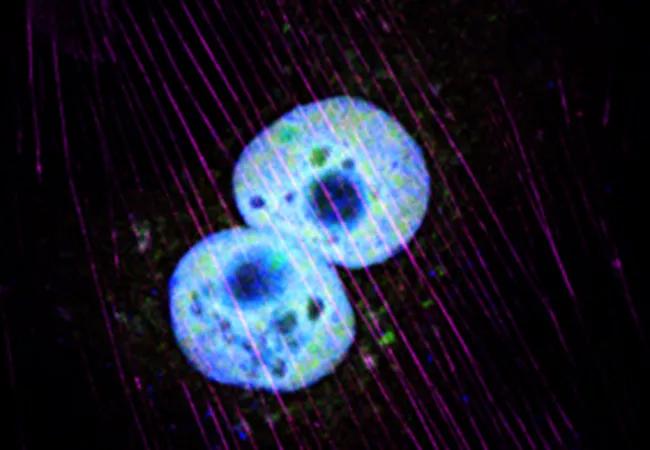Newly discovered signaling axis opens therapeutic window

A research collaboration between scientists from Cleveland Clinic’s Lerner Research Institute and Case Comprehensive Cancer Center uncovers for the first time how two proteins work together to drive triple-negative breast cancer (TNBC). The researchers say discovery of this pro-cancer pathway offers a potential target for new treatment strategies, which are desperately needed for a class of cancer which is resistant to all current standard-of-care therapies.
Advertisement
Cleveland Clinic is a non-profit academic medical center. Advertising on our site helps support our mission. We do not endorse non-Cleveland Clinic products or services. Policy
Previous research has established that a WASP/WAVE actin-cytoskeleton remodeling protein called WAVE3 contributes to the invasion and metastasis of tumors in many types of cancer, including breast cancers. The current study, published in Oncotarget, explains how and why this happens in TNBC. The team of researchers, led by Khalid Sossey-Alaoui, PhD, Department of Molecular Cardiology, discovered that WAVE3 is enriched in cancer stem cells (CSCs) in TNBC.
In search of how WAVE3 works, the researchers knocked out WAVE3 expression in TNBC cell lines using CRISPR/Cas9 gene editing technology. They observed that, compared with control cells, the WAVE3 knockout cancer cells migrated and invaded healthy cells at a significantly reduced rate. Silencing WAVE3 also resulted in markedly fewer CSCs and reduced expression of three genes well-associated with the dangerous cells.
The researchers next investigated whether turning off WAVE3, and thereby reducing the population of CSCs, may reduce chemoresistance in TNBC cells. They found that WAVE3 knockout cells exposed to radiation formed significantly fewer new colonies than the control cells, an indicator of thwarted metastasis. Taken together, these findings suggest WAVE3 is an important disease moderator, and that inhibiting its expression may help to disarm some of the hallmark pro-cancer defense mechanisms that enable CSCs to evade treatment.
A series of protein expression and staining analyses revealed, however, that WAVE3 does not act alone. WAVE3 and YB1, a CSC-specific transcription factor, work together to drive disease. The YB1 protein can be found in both a cell’s cytoplasm and nucleus. It is most dangerous when it is in the nucleus, as this is where it transcribes and activates the CSC genes. The team found that when WAVE3 binds to YB1, YB1 translocates to the nucleus.
Advertisement
Dr. Sossey-Alaoui believes that preventing YB1 from reaching the nucleus, then, may be one novel approach to treating TNBC. More research is needed, but identification of this pathway suggests that drugs that either inhibit WAVE3 expression or prevent WAVE3/YB1 binding may prove an effective disease therapy.
Kamila Bledzka, PhD, is first author on the study, which was supported by grants from the National Heart, Lung, and Blood Institute to Edward Plow, PhD. Dr. Plow is chair of the Department of Molecular Cardiology and holds the Robert C. Tarazi, MD, Endowed Chair in Heart and Hypertension Research.
Advertisement
Advertisement

First full characterization of kidney microbiome unlocks potential to prevent kidney stones

Investigators are developing a deep learning model to predict health outcomes in ICUs.

Cleveland Clinic and Johns Hopkins collaboration could help meet need for new therapies

Cleveland Clinic researchers’ finding paves the way for new antiviral approaches

Multicenter collaboration aims to facilitate tracking of neurological activity deep within tissue

Findings illuminate MCEMP1 protein’s role in severe inflammation

Anti-viral immunity identified a novel mechanism in necroptosis

Cleveland Clinic’s new Global Director of Vaccine Development outlines plans, priorities